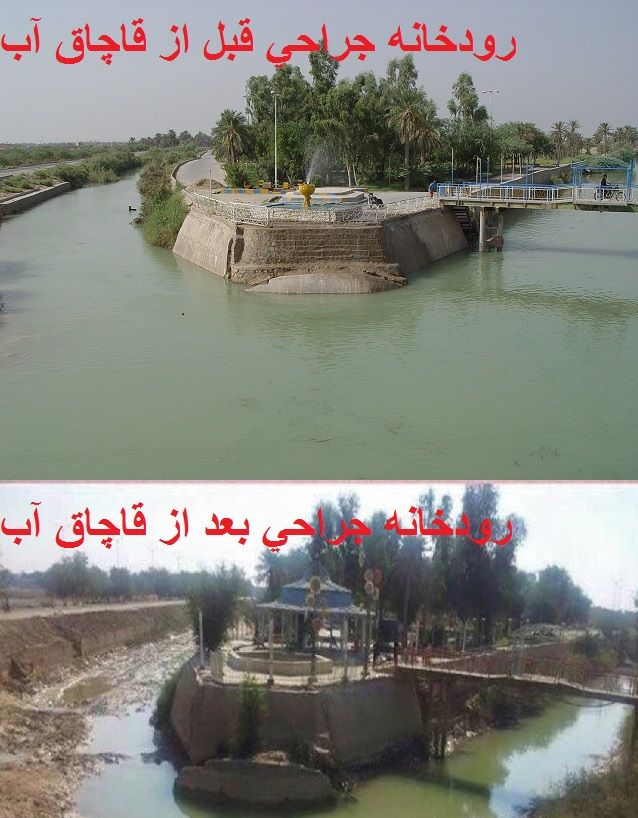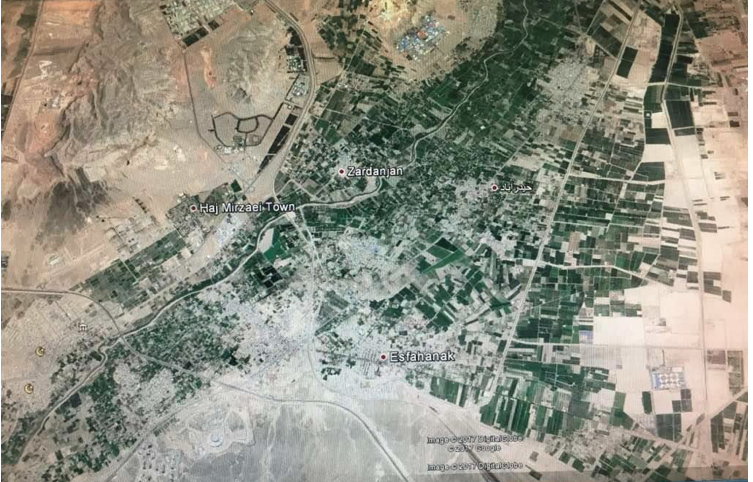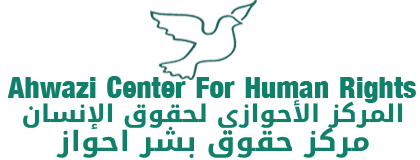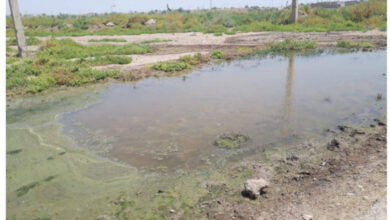
The third tunnel of Koohrang will be used as the seventh pipelines to transport Karoon water into the Iranian central plea. According to the Khuzestan Fars News Agency, for years we have seen that in Iran, despite the drought, and despite the loss of abundant water resources, they are expanding the water transport factories to transport and divert Karoon River’s water.
Mohammad Taghi Tavakoli, chairman of the water committee of the Islamic Consultative Assembly said; “that water in Iran is worthless”. He also added; “Iran’s rank in water resources management is 132nd from 133 countries, indicating how much the authorities are careless about natural resources such as water”.
Unfortunately, for years, we have seen water diversion rather than water management and reforming water patterns that not only reduce water consumption, we also seen waste and waste of water and non-economic measures.
Masoud Mir Mohammad Sadeghi, Director of Isfahan Regional Water Company, said that since winter 2017,
the third tunnel of Koohrang (Birgan) has been drained, but because of the tunnel is not ready, only about one pumping station transport about 50 to 60 million cubic water per year. Director of Isfahan Regional Water Company, emphasizing that the Koohrang III tunnel has already made 97% progress, added: “This tunnel will be put into operation by the end of 2017.
According to Mir Mohammad Sadeghi, “100% of the credits were allocated to the Koohrang III project (Birjan) in 2016”. The third Koohrang tunnel (Birjan) is actually is the seventh waterway in the Karoon pipelines, and many times, Masoumeh Ebtekar Head of the Department of Environment said that this tunnel is without environmental permits and other standards permits, but we are witnessing a serious and full-scale operation of the Karoon pipelines. We do not really know why the activities of the third Koohrang tunnel are not completely and permanently canceled.
Digging a 24-kilometer tunnel of Koohrang III in the Birjan region has caused the drying of many water springs and permanent sources of Karoon water, so that the volume of the transport water of the Koohrang tunnel in the early studies was 225 to 300 million cubic meters water annually, but after digging The third tunnel of Koohrang, which is 24 kilometers, was cut and destroyed by the sources of the Karoon, and even the water intended to be transported to the Isfahan river of Zayandehrud was destroyed by the Isfahan Regional Water Organization and now about 150 million cubic meters of water been transferred, they said.
So far, 6 projects for the transported water from Karoon river have been transferred more than 1 billion cubic meters per year.
So far, six projects for the transported water from Karoon, with annual capacity of more than one billion cubic meters, are being completely and annually transmitted in the event of the destruction of the Karoon river more than half-dead.
The water of Karoon river have been transported to non-economic purposes. All these plans are damaging farmers and agriculture lands. The six fully-transmitted Karoon (Dez) nodes included;
- First tunnel, Koohrang tunnel from Koohrang to Zayanderud since 1953;
- Second tunnel, Koohrang tunnel II from Koohrang to Zayanderud since 1989.
- Third tunnel, Cheshme Langan tunnel since 2005 to Zayanderud
- Fourth tunnel, Kamal Salih-rud teereh tunnel has been used for Arak’s industries since 2011
- Fifth tunnel Khadghestan tunnel to Zayanderud since 2013
- Sixth tunnel Dez from Aligudarz to Golpayegan Isfahan since 2016.
Dez River in Susa (Shush) before entering Ahwazi Karoon River and is the main source of Karoon. Transports of water from Koohrang tunnel under very bad conditions that Ahwazi people are in, they required water to control gutter and heat. The third Koohrang tunnel is actually the seventh Karoon transit zone to transfer water and carried out under the conditions where ponds, wetlands, meadows, flood plains, Khuzestan fields become the main centers of the internal reed, even though Khuzestan supposed to has more natural right as they own the natural resources themselves; Ahwaz broke the record of the hottest cities in the world, shows the severe climate change of Khuzestan. In this situation, Karoon water transmission, while Ahwazi people don’t have drinking water.
A look at the transfer of Karoon river waters to Zayandehrud shows that these measures were only used to expansion of the water industry to other cities, which should have been constructed on the shores of the Arab Gulf in Bandar Bushehr, Hormozgan, Sistan and Baluchistan, rather than relying on the transfer of water from the Karoon river. Isfahan, Yazd, Kerman, Rafsanjan and Ardakan are areas with water scarcity that only with high political influence can transfer water to these areas at high and non-economic costs and used for non-economic agriculture and industries.
The price of water for transferring Karoon river to the central plateau is more than the price of its products, meanwhile areas such as Khuzestan destroyed while agriculture in Khuzestan is cheaper and no need to transport water.
Iranian regime claims that they are transporting water for drink purposes, the government will continue to open new hydroelectric factories in the provinces such as Isfahan, Yazd and Kerman, and one of the cities in Kerman province will be turned into a major pole of steel production by 2019, relying on transporting waters from Karoon river.
According to Kerman Regional Water Authority, Kerman is the main target of Karoon water; Kerman agricultural water consumption is the same as drinking water throughout the country.
on the 3rd of November 2016 is the opening of the largest Middle East railroad manufacturing plant and the No. 5 Smelting Casting Plant in Isfahan and the new reinforced iron and steel mills and new iron-smelting factories were initiated by the first vice president of the Isfahan province during which he was commissioned to build another new factory named Saba steel in Isfahan, and on the other hand, Isfahan is currently planting rice in Isfahan province, the products of water supply whose water prices are higher than the product itself, these unsatisfactory measures do not end here, and we see the opening of Kerman steel factories in recent years. We also saw a pipeline of 1100 KM of Karoon water from the Behesht Abad headquarters during the President’s visit to Kerman in May 2016.
However, Masoumeh Ebtekar the head of the environmental departmant, said: “The transfer of water from the Karoon pipelines and the Birjan (Koohrang III) and Behesht Abad tunnels is lacking environmental permits and promised to close the projects.”
The polluting industries in Yazd and Isfahan rush away tourists.
According to a report Koohrang third tunnel shows that Karoon river’s water was transferred to Zayandehrud even before the dam was constructed through the large water pumping station. So far, with Karoon Water Pipelines, the first and second tunnels of Koohrang, Cheshme Langan and Khadghestan have been taken from the Karoon Water River as a Zayandehrud River, and by transferring the water of the Birgan tunnel (Koohrang III) and the Behesht Abad tunnel from Karoon to Zayandehrud Water harvesting from Karoon is equivalent to two natural resources, the volume of water flowing on the Zayandehrud River stream is equivalent to three natural resources of the natural river, i.e., a volume of 2 billion and 400 million cubic meters of water per year, while its drinking and sanitation needs the area is about 300 to 400 million cubic meters, and this amount is from natural sources, bringing about 800 million cubic meters of water per year.
Expanding hydropower industries; and being careless about agricultural future in Ahwaz, the transfer of water from the Karoon is higher than before, the condition of the central plateau is not improving, since the water transmitted is multiplied by water consumption, and we see that the Zayandehrud natural river flows through four branches of the Karoon that are currently in it, with a runaway from the village of ChamTahq to Isfahan province, and in west of Isfahan Province, it is watering rice fields and factories in the province. In the years of low rainfall Sub three-bridge due to high costs of west of Isfahan city (within the province Isfahan) Water only flowing through the opening and closing of the Nokabat, and this mismanagement of water consumption requires a serious reform of the agricultural and industrial patterns of consumption. So that water flows to the east of Isfahan and Gavkhoni as well as the regular flow of Zayandehrud Consumption Pattern Modification It is not the destruction of Khuzestan and the paths of Karoon and the thousands of years of Karoon river civilization; we hope to see the water transportation plans to be cancelled as soon as possible.
On the other hand, the transfer of Karoon river waters is the rights of Ahwazi people and should not be taken away.
Are these budgets isn’t the same budgets as Al-Ahwaz oil budget, which should be spent on the development of Ahwaz, and not on non-economic and destructive plans.
Farming with Karoon’s water in Isfahan province is very non-economic.
Only more than 4 times the water flow from Karoon is been using for agriculture in Isfahan province and more than 40 times the water consumption of the province’s industries have increased and Isfahan province has become the largest center of artificial green spaces with hydrophilic plants, agricultural farms and rice paddies increased As years, despite the 10 years reduction of summer planting in Isfahan, in 2017, despite the fact that during the low rainfall in Khuzestan province in many areas, cultivation is prohibited and many Khuzestan areas just along the Karoon River just dry and the Khuzestan plain, which is more than two and a half million hectares It has only fertile land with only 500,000 hectares of water.
The price of water produced from agricultural products transported by Karoon is higher than the product itself, due to the unrealistic price of water; the farmer has an illusion of profit. For example, the managing director of the Kerman Regional Water Authority has quoted the price and cost of transferring one cubic meter of Karoon’s water to Kerman is about 10 thousand Toman (Iranian money), which proves that agriculture and industry with this water will destroy the country’s economic resources and will end the resistance economy.
Unfortunately, this carousel-free water supply has been priced at an insignificant price of about 300 USD and is unrealistically priced, which has led to illusions of profit for Karoon’s transportation purposes.
Even if water losses in traditional farming methods are not for Karoon water transfer purposes, the excessive costs of water transfer to agriculture are completely uneconomical because the transfer of water is not sold to the farmer at the true price and if the farmer living in Isfahan or Yazd or Rafsanjan wants to have a real price of transferred Karoon’s water will reduce the price of its product tens of times and will surely not be sold in the competition for its products.
Water consumption in Iran is more than 10 times higher than that the province, because water losses in flood water in Isfahan province are very high and all of this makes it possible during the years of environmental water stress and Zayandehrud to be flooded for agriculture, industry water in Isfahan province.
This is despite the fact that farming with Karoon river water in its natural path in the plains of chaharmahal and bakhtiari and Khuzestan plain is both economic and both to the resistance economy and to control the Khuzestan river.
From about 800 million cubic meters of Karoon’s transfer water to Zayandehrud (equivalent to a natural gas producer), about 90 million cubic meters have been transferred to Yazd water transport industries.
It is worth mentioning that the expansion of the hydroelectric industries such as steel in cities like Isfahan and Yazd will increase the demand for labor force and increase the pollution of the water, which will increase the pollution of the regions. In areas with water constraints, non-hydrographic industries should be deployed, not industries, at the expense of other lands! But it should also be taken into account that even the transfer of water for drinking if the downstream in Khuzestan is destroyed is not reasonable and rational.
We hope that to see the water transportation plans to be cancelled as soon as possible to provide the nature with the opportunity to be restored; perhaps we will have some water for the next generation.
Two satellite imagery taken from google Earth from the Isfahan Plain. Thousands of hectares went to the summer crop, which proves the crime of water transfer for agriculture and industry and welfare centers on the central plateau.


So far, 6 projects for the transfer of water from Karoon branches have been transferred to more than 1 billion cubic meters per year.
So far, six projects for the transfer of water from Karoon branches, with a capacity of more than one billion cubic meters per year, are fully and annually transmitted in the event that the Karun is half-dead.
Water from Karoon Branches for non-economic and illogical plans of the water industry has been transferred to the desert and agricultural-damaging agriculture with high water transportation to non-Karoon lands.
Ahwazi Centre for Human Rights
Written by Hossein Bouazar




